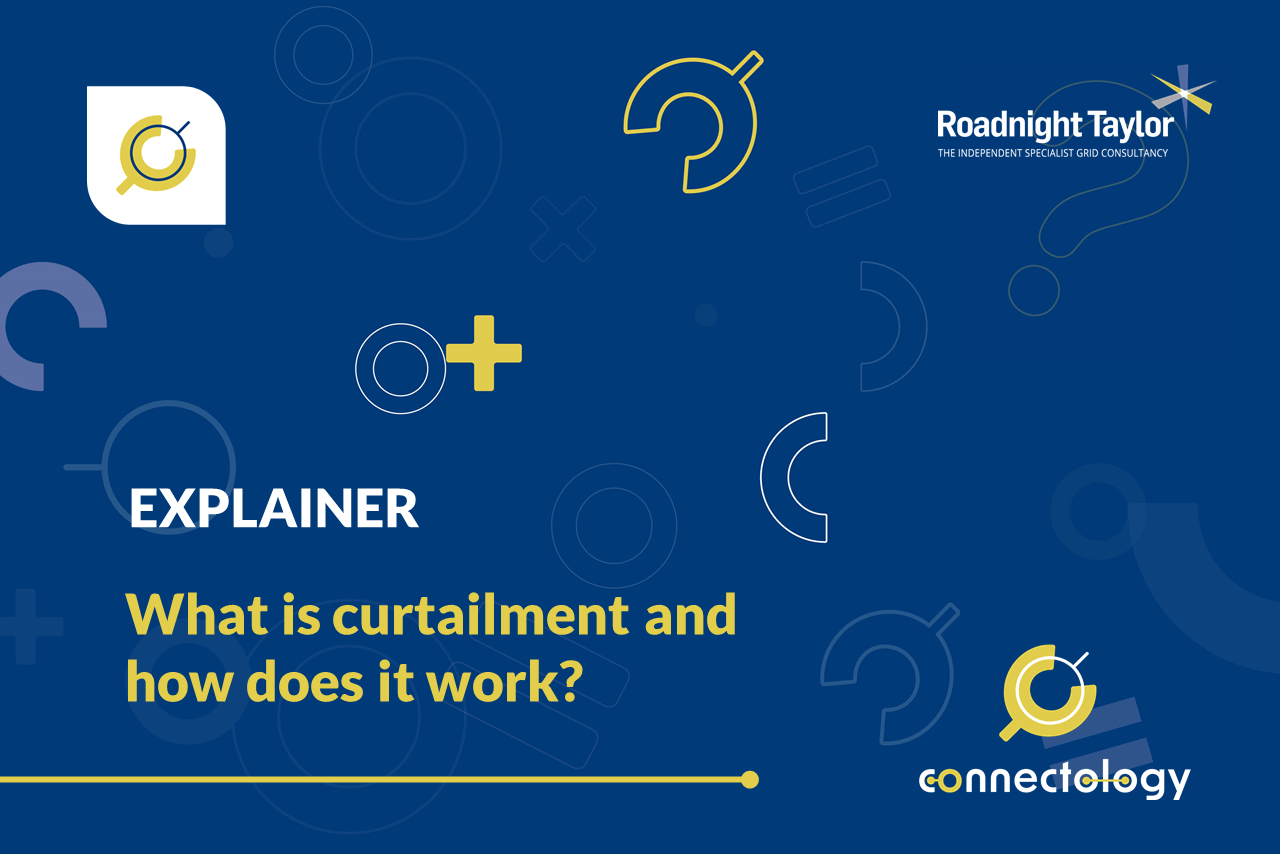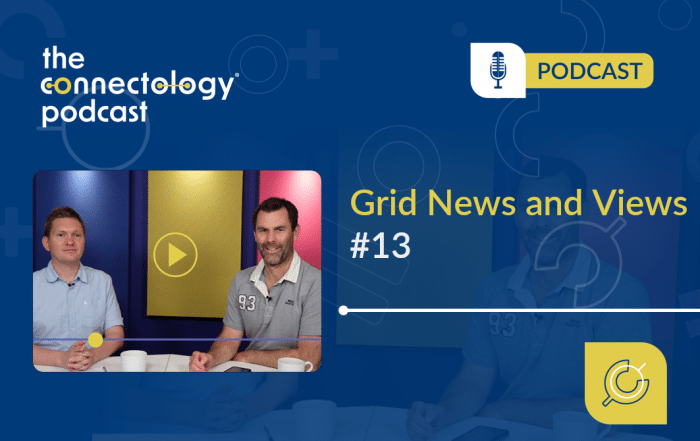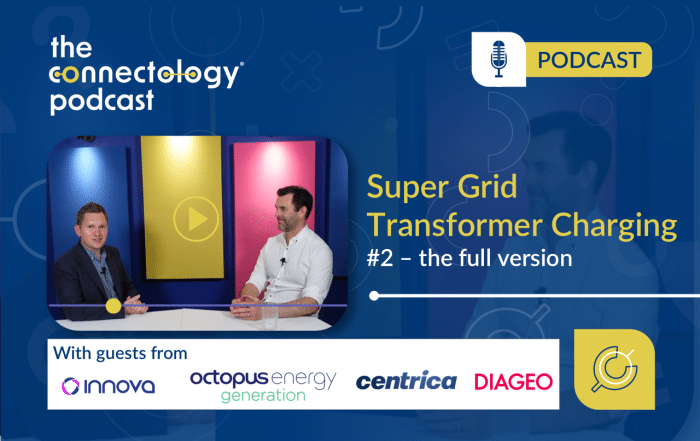What is curtailment in electricity networks and how does it work?
Network companies can limit the output of a generating site (such as a solar farm) to avoid having to make expensive upgrades to the network. This limit is called curtailment.
Article by Pete Aston – acknowledged expert in networks
Pete joined Roadnight Taylor from Western Power Distribution, the UK’s largest DNO, where he was Primary System Design Manager. He led a team of sixty responsible for all connections and reinforcement of the extra high voltage network and oversight of the roll out of active network management across all four of WPD’s licence areas.
1st April, 2022

When parts of the electricity network become full and reach their capacity, a network company can use an Active Network Management (ANM) scheme to control the output of a generator so that it doesn’t overload the grid. Our previous article explaining ANM introduced the idea of curtailment, when the output of a site is controlled by the network company to avoid expensive upgrades to the system. This article unpacks curtailment in more detail, but first you may need to understand the difference between power and energy.
What is being curtailed?
ANM curtailment is viewed differently by network companies than by generators. For network companies, instantaneous power output is the key issue. If too many generators have a high peak power output, the total MW power flow through the network could overload something. So, a network company will issue curtailment signals in terms of MW. For example, on a certain day a 5MW solar farm might only be able to be allowed to export 2MW due to constraints on the network, so the network company would have to issue a curtailment instruction to reduce from 5MW to 2MW.
For the generator, however, the issue is not so much having to reduce to 2MW, but the corresponding loss in MWh output (i.e., energy), because it is the sale of MWh of electrical energy by which the generator makes money.
How much curtailment?
The million-dollar question with curtailment is clearly, ‘How much’? Before a generator or a network company can model how much curtailment there may be, a baseline figure needs to be calculated to compare against the curtailed output. Due to the variability of all types of generation, curtailment is normally assessed over the period of a year, so an annual baseline needs to be calculated.
This baseline figure depends on the annual capacity factor. All types of generation have an annual capacity factor, i.e., the likely availability during a year. This is influenced by many factors, such as plant reliability, maintenance schedules, market conditions, network outages, and fuel source availability, etc.
Nuclear has a capacity factor of close to 90%, baseload gas 50-60%, wind 30-40% and solar typically no more than 15%. A 5MW solar farm with a 15% capacity factor would therefore expect an annual energy output of 5MW x (24h x 365days) x 15% = 6,570MWh.
Whilst network companies are only concerned about peak power, they will usually provide reports with their ANM connection offers (although not all DNOs provide a report) showing the predicted curtailment, in terms of energy. In these curtailment reports, a network company will either express the curtailment as a reduction in MWh output over a year, or as a percentage. For example, the same 5MW solar farm might have a predicted curtailment of 10% energy over the year. This means that 6,570MWh x 10% = 657MWh of energy output will be lost due to curtailment.
Assumptions are key
In calculating how much lost energy there will be from curtailment, a network company will need to make lots of assumptions. These will include the likely baseline annual output of the generator being assessed, the assumed output profile of accepted (but not yet connected) generators in the network with higher contractual positions, actual output of connected generators, network demand, and network outages, etc.
Some of these assumptions can be extremely significant. For example, many DNOs running ANM will assume that a battery is exporting 100% of the time. This clearly can’t happen, because a standalone battery system would need to discharge as much as it charges and so would only export for 50% of the time at most. But it is very difficult for a DNO to actually predict the output of a battery, when at offer stage battery developers themselves likely don’t know what services the battery will enter into and what the output profile will be.
As another example, if the DNO has assumed a different annual baseline energy output for a site than the developer has calculated, the curtailment (in % terms) will look different. For the same 5MW solar farm above, the DNO might assume an annual capacity factor of 15%, giving a baseline of 6,570MWh over the year. If 657MWh would be lost due to curtailment, this would be shown as a 10% curtailment. However, if the developer had assumed a 17% capacity factor (i.e., 7,446MWh output a year), then the overall curtailment would be 657MWh / 7,446MWh = 8.82% (assuming that the number of MWh of curtailment doesn’t change with a different load factor, which it might, as the effects are complicated to assess).
Fast growth in curtailment levels
Once a network limit is reached and ANM is applied, the level of predicted curtailment for subsequent customers can increase significantly. The first few customers may only have a few percent curtailment, the next batch of customers 5-10%, quickly jumping up to 20-40%, and then higher again.
This typically happens when the same types of generation technology all want to connect behind the same constraint. As a slightly exaggerated example, take a 10MW circuit, in an area popular with solar.
- The first 10MW of solar connections can proceed without any curtailment.
- The next solar customer gets given an ANM connection. Their predicted curtailment might only be during the 1-hour period during the middle of summer days when all the other solar is at peak output.
- The next customer who comes along will also been given an ANM connection and will have to constrain for that same 1-hour period, but may also have to constrain for the two 1-hour periods either side of midday as well, because the first ANM customer filled up the headroom in those slots. So, they have three hours of curtailment during each summer day.
- A fourth customer will have to curtail for the same three hours as the third customer, but may also have to curtail for the 1.5 hour slots either side of that as well, so a total of six hours a day.
This is why knowledge of previous levels of curtailment doesn’t necessarily help to determine the curtailment for a new scheme. It is dependent on technology mix, export capacities, location in the network, demand profiles, etc.
Transmission Active Network Management
Quite regularly it is the super-grid transformers at the interface between transmission and distribution (found in grid supply point (GSP) substations) which lead to the most significant curtailment in a network. Instead of changing these transformers for larger units, ANM can be used to control the power flow. When this Transmission ANM (TANM) is used, it quite often becomes the biggest source of curtailment in a network and can lead to curtailment levels exceeding 60%.
Further help
Due to all the complexities with calculating curtailment, it is not always possible to give quick answers to what predicted levels of curtailment will be for specific schemes. However, Roadnight Taylor can help with this. We can provide feedback on generator diversity on some parts of the network – along with some insight into the relevant network operator’s assumptions. We can also undertake detailed curtailment assessments for some parts of the network, using the network operator’s own half-hourly power flow data and tailored assumptions for operating profiles of different connected and contracted technologies and schemes. For the other parts of the network, we can advise on general issues associated with potential curtailment to help our clients make sensible decisions to maximise their investment.
Contact us
For more information on we can help you calculate potential curtailment or advise on curtailment issues, please call the team on 01993 803571 or fill in our contact form.












